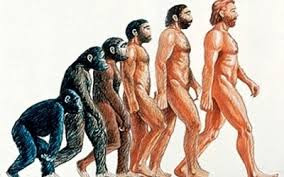This morning, on
my way to my car, I walked through a gargantuan spiderweb. A diligent arachnid
had been hard at work, industriously spinning his beautiful web, only to have
some bumbling human destroy it in one fell swoop.
Of course I had my
hands full, since these incidents never occur when one is unencumbered. I tried
swiping the web from my face, only to realize its owner had conveniently
hopped aboard my person. I suddenly became aware of a chunky spider the size of
a malt ball taking a leisurely stroll down my arm.
Despite the burden
of my computer, a coffee mug, and my purse, I managed to flail my limbs with enough
vigor to dislodge him. He gracefully sailed down his web, landing gently at my
feet and then scampering off into the undergrowth. After giving myself a
thorough rubdown to ensure I wasn’t toting a giant egg sack on my back, I
gathered my belongings and went on my way.
I’m not
particularly afraid of spiders. I hold them in the same regard I hold snakes: cautious
respect and deep admiration for the way they ambulate. Image what humans would
be like with eight legs instead of two? It would probably render automobiles
obsolete.
 My eight-legged
encounter got me thinking about our own mode of locomotion. In the animal
kingdom, walking on two legs (bipedalism) is pretty unique. Only two other
bipeds readily come to mind – penguins and kangaroos, both of which have
devised their own strategies for getting around. Penguins have sacrificed
efficient walking for swimming, and kangaroos took to hopping, which sure beats
walking across the Australian bush.
My eight-legged
encounter got me thinking about our own mode of locomotion. In the animal
kingdom, walking on two legs (bipedalism) is pretty unique. Only two other
bipeds readily come to mind – penguins and kangaroos, both of which have
devised their own strategies for getting around. Penguins have sacrificed
efficient walking for swimming, and kangaroos took to hopping, which sure beats
walking across the Australian bush.
So why did humans
evolve such an unusual gait? Perhaps we should first ask, "when?"
Ancient fossils
are hard to come by. The older they are, the less chance they have of being preserved intact. But there are clues to bipedalism among the fragmented
remains of our earliest ancestors, and some of the best evidence has nothing to
do with legs.
The hole in the
base of the skull where our spine enters is called the foramen magnum. And it’s
the position of this hole that provides a clue to upright walking. When it’s
oriented at the base of the skull, it shows that the creature stood upright. If
the hole is located toward the back of the skull, it indicates a quadruped
(think about your dog or cat).
And it turns out
our bipedal gait evolved much earlier than once believed. It was once thought
that walking on two legs evolved in concert with our large brains. But what
we find in the fossil record is that bipedalism was in place millions of years
before our big brains arrived on scene. Even the seven million-year-old Sahelanthropus tchadensis, unearthed by
a group of French paleoanthropologists in 2001, is believed to have been
bipedal, based on his foramen magnum. Although scientists are still quibbling…
Theories of
bipedalism go all the way back to Darwin, who believed the freeing of our arms
allowed us to concentrate on the production of tools and weapons. This makes
sense until you take into account that stone tools don’t show up until many
millions of years after we started scooting around on two legs.
Others believe
climate change had a hand in it. Perhaps humans took to walking as their
forests were reduced and food became harder to come by, prompting males and
females to partner up for provisioning. Males could gather food (in their arms,
of course), and provide for their female and offspring, which would cement
their bond and benefit both parties.
Or perhaps the
reduction in forests required our ancestors to traverse longer distances.
Walking upright, or better yet, running, has been shown to be more energy
efficient than the knuckle-walking of our primate cousins, and there’s a whole
new line of research examining the role running may have played in the
evolution of humans.
Whatever the
reason, we humans wouldn’t be human without our unusual gait. Sure, spiders
have it made, what with their eight legs and their ability to walk on water. But
it’s hard to imagine how humans could have accomplished all we accomplished
if we were still ambling about on all fours. Stone tools, pottery, weapons, and
art would have been quite a challenge without free hands, as would carrying,
whether it be food, firewood, or children.
So you can keep
your eight legs, Mr. Spider, and I’ll stick with my two. Your arachnid
abilities may grace you with unusual gifts, but it only takes one of my two
feet to squash you like a pancake.
Post Script - I would never dream of stepping on a spider...
In case you didn't get enough.





